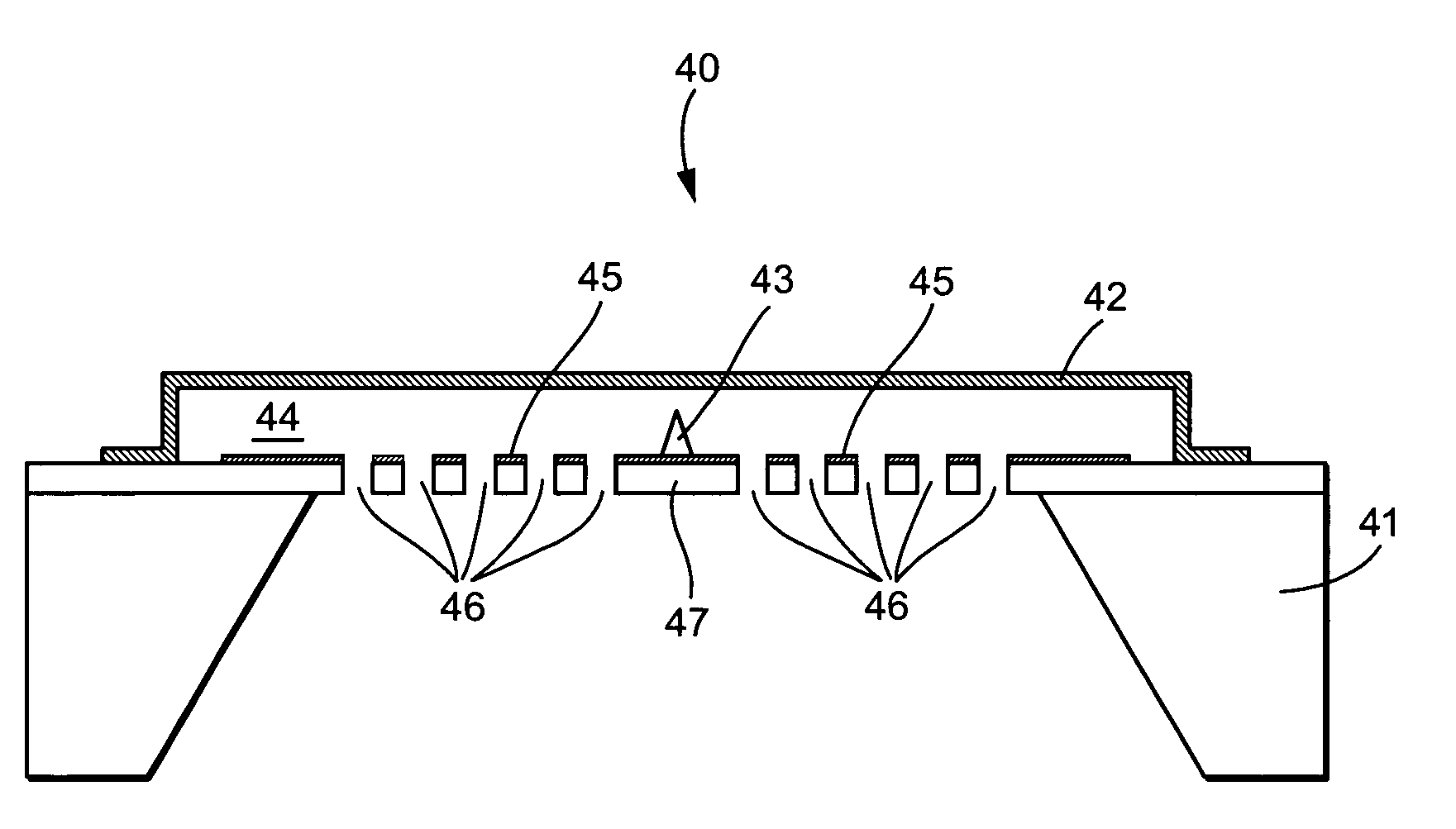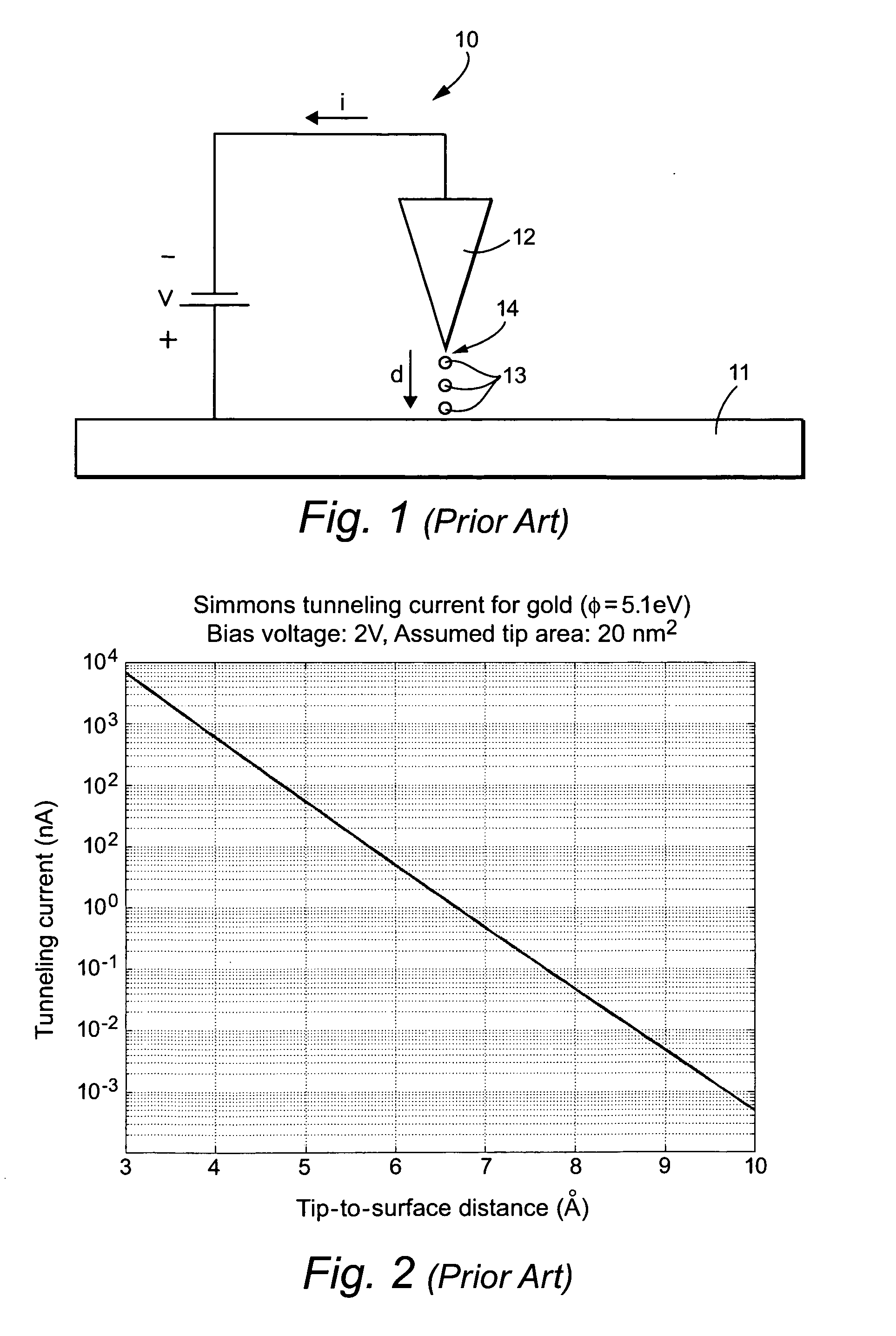Miniature acoustic detector based on electron surface tunneling
a technology of electron surface tunneling and microscopic acoustic detector, which is applied in the direction of electrical transducers, semiconductor electrostatic transducers, instruments, etc., can solve the problems of affecting the steady-state tunneling current, and achieve the effect of reducing the vibration sensitivity of the microphone, reducing the damping of the microphone and the associated nois
- Summary
- Abstract
- Description
- Claims
- Application Information
AI Technical Summary
Benefits of technology
Problems solved by technology
Method used
Image
Examples
Embodiment Construction
[0023] The present invention is an electron surface tunneling microphone with very high sensitivity in which a tunneling tip is integrated with a pressure sensitive membrane on a single support substrate.
[0024] A preferred embodiment of the electron surface tunneling microphone structure 40 of the present invention is shown in FIG. 5. As shown in FIG. 5, a tunneling tip 43 is placed on a single support substrate 41, where it is mounted on a rigid perforated suspension plate 47. As a result, the vibration sensitivity of the microphone is reduced to that of membrane 42. Suspended above plate 47, in a manner similar to other comparable microphone structures, is a thin flexible membrane 42. Also included on the suspension plate 47 are at least one, and preferably a plurality of control electrodes 45, which are used to move the conductive membrane 42 into close proximity with the tunneling tip 43. Movement of membrane 42 relative to tunneling tip 43 is achieved by applying an electrical...
PUM
 Login to View More
Login to View More Abstract
Description
Claims
Application Information
 Login to View More
Login to View More - R&D
- Intellectual Property
- Life Sciences
- Materials
- Tech Scout
- Unparalleled Data Quality
- Higher Quality Content
- 60% Fewer Hallucinations
Browse by: Latest US Patents, China's latest patents, Technical Efficacy Thesaurus, Application Domain, Technology Topic, Popular Technical Reports.
© 2025 PatSnap. All rights reserved.Legal|Privacy policy|Modern Slavery Act Transparency Statement|Sitemap|About US| Contact US: help@patsnap.com



